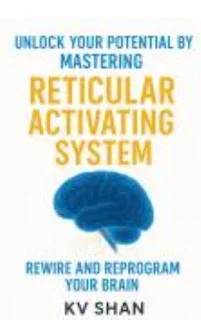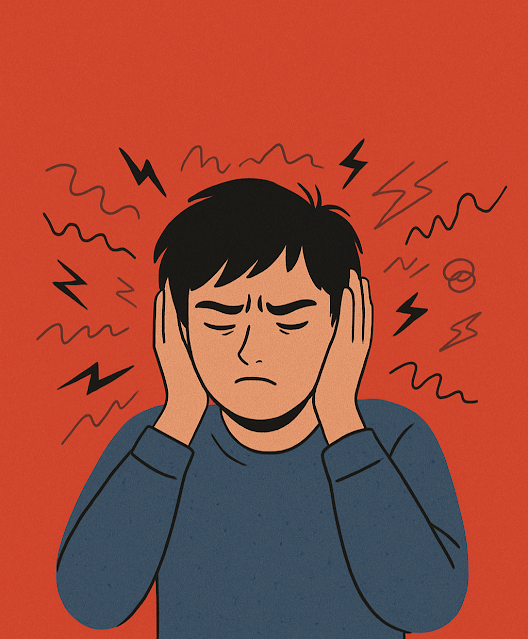The Telepathic Trap: When Your Thoughts Seem to Echo on the Internet
A Strange Pattern You can’t Explain
Often I wonder while using social media how one of my friends posted a video that I had seen a little while ago.
It becomes more surprising when google recommends certain news articles or ads that I just discussed with my colleagues.
Am pretty sure that you all did or do have such experiences.
You talk about something — just talk — and within hours, it's on your screen.
You're scrolling Instagram, and there it is: the very product you casually mentioned in the kitchen.
Worse, your cousin in another city says, "Hey, I just watched this random video about the thing we joked about yesterday."
You didn’t search it. You didn’t message it.
No one typed a word.
And yet, somehow, your thoughts — or conversations — have started showing up online.
You start to wonder:
Is there something deeper happening here? Some kind of spiritual connection? A telepathic force weaving through the digital world?
Or may it be that you and your friends have a thick relation that you are connected telepathically?
Possible right? We hear about a lot of spiritual connections of late.
Is it that the so called "universe" is answering you?
Or going more digital, is eavesdropping you? Watching you? Or rather stalking you?? Telling you that "You are not alone here". Is your privacy compromised? How long and how far you can run?????
Shocking isn't it?
You desperately need an answer to these questions. Dont you?
Then let’s explore it one by one in parts.
Part 1: The Illusion of Telepathy
🧠 “I Was Just Thinking About That…”
It begins as a whisper.
You think of an old friend, and the next moment, their name pops up in your “people you may know.”
You mention a dream destination to your partner over lunch — and Instagram shows you reels of that exact island in the evening.
Or you and your friend talk about a rare herb, and hours later, YouTube is recommending a deep-dive documentary on it.
Coincidence? Intuition? ESP?
The sheer accuracy of these digital “responses” feels like the universe is tuned in.
It feels personal. Magical. Even divine.
🔮 Spiritual Explanation: A Shared Field of Consciousness?
Many believe it’s not just coincidence. It’s consciousness convergence.
They say we live in a web of energy where thoughts are frequencies.
When two minds vibrate at the same frequency, they create a resonance — a telepathic echo across space and time.
In this view, you and your friend didn’t just talk about something.
You tuned into the same frequency, and the digital world reflected that connection.
Call it:
Twin flame telepathy
Soul resonance
Astral awareness
Universal synchronization
It’s poetic. Comforting. Romantic even.
And for a while, it seems like the only explanation for this bizarre digital clairvoyance.
But then..
Part 2: The digital Awakening — The Truth Behind the Magic
Let’s take a deep breath and look at what’s really happening.
Yes, it feels like telepathy.
But in most cases — it's technology playing mind games with precision.
🧠 1. Shared Wi-Fi or IP Address
If you and your cousin live in the same house or visit often, your devices share the same Wi-Fi network.
Tech platforms (YouTube, Google, Instagram, Facebook) recognize this and assume your devices belong to the same household.
So if:
You watch a video about “Egyptian mythology”
Your cousin opens YouTube later that day
…he’s very likely to see the same content in his recommendations.
Why? Because the platform thinks, “If someone at this IP address watched this, others might enjoy it too.”
Not magic.
Just shared data.
📱 2. Cross-App Data Sync (Especially WhatsApp and Meta Apps)
You and your friend message on WhatsApp.
You talk about yoga mats or weird medical conditions.
What you don’t realize is:
WhatsApp, Facebook, and Instagram are owned by Meta
Even though WhatsApp is end-to-end encrypted, metadata like who you talk to, how often, and what kind of links you click are all collected.
So if you share a link about “breathwork” in WhatsApp today, Instagram might start showing breathwork reels tomorrow — to both you and your contact.
Again, no one is reading your mind. They're just reading your behavior.
🧠 3. Contact Sync and Social Graphing
Ever given Instagram, Facebook, or Gmail permission to access your contacts?
Then you're in a massive digital web called a social graph.
It knows:
Who your friends are
Who your friends' friends are
And what all of you are into
So when you watch a video on “gut health,” and your friend sees the same video in her YouTube suggestions — it's not because of telepathy.
It’s because YouTube knows you're linked, and that your interests likely overlap.
Prediction, not intuition.
🧠 4. Google’s Data Linking Is Beyond Imagination
You used Chrome to search something.
Your phone tracks:
Which apps you opened
What you paused while watching
What your microphone heard in the background (if permissions are granted)
Which Wi-Fi you connected to
Google uses all of this to tailor your YouTube homepage, your Gmail ads, and even your Google News feed.
Your friend watches a video. You talk to them. Google notices the pattern of communication and starts suggesting the same thing to you — even if you never searched it.
It’s creepy. It’s brilliant.
It’s absolutely real.
🔍 5. Same WhatsApp Group = Shared Ad Influence
You're in a group chat with your cousins. One of them shares a YouTube Short.
Now, even if you didn’t click it — your phone noted it.
Apps like Facebook, Instagram, and YouTube often cross-reference group activity to create ad patterns.
Soon, the topic from that video will:
Appear in your YouTube Shorts
Show up in related Google searches
Influence your Explore tab on Instagram
It’s not because you felt it.
It’s because your social bubble is being tracked — and fed content accordingly.
💥 What You Mistake for Telepathy Is Just…
Data triangulation
Behavioral profiling
Shared online signals
AI-driven predictive algorithms
It’s not you sending energy to the universe.
It’s AI pulling your shared data streams into one predicted output.
A digital illusion — brilliantly disguised as fate.
Part 3: Why it Feels so Personal (Even though it’s Not)
This isn’t your fault.
The tech is designed to make it feel personal. Intimate. Almost psychic.
Why?
Because if a platform can predict what you want before you type it, you stay longer. You engage more. You buy faster.
🧠 The Brain is Wired for Patterns
We’re hardwired to notice coincidences.
Our brains are meaning-making machines.
So when you say “I want sushi” and then see a sushi ad — it feels miraculous.
You forget the other 10 times that didn’t happen.
You remember the one that did.
It sticks. It feels magical.
But it’s math. Machine learning. Behavioral economics.
The magical predictors, prophets, or oracles thrive on this theory. You notice the one prediction that came true over the 99 that failed
👁️ The Illusion Is Real — Emotionally
Here’s the twist.
Even if it’s not spiritual…
Even if it’s algorithms…
It still tells us something:
You’re more connected to your environment — and to others — than you realize.
Your data trail, your digital habits, your social circles… all leave energetic footprints.
And the internet is the mirror that reflects them back.
How to Break the Illusion (If You Want To)
If all this is too close for comfort, here’s how to regain control:
✅ 1. Turn Off Ad Personalization
Go to:
Google Ad Settings
Facebook → Settings → Ads → Ad Preferences
Disable targeted ads.
✅ 2. Revoke Microphone Access
On Android/iOS:
Go to:
Settings → App Permissions → Microphone
Remove access from non-essential apps (Instagram, Facebook, etc.)
✅ 3. Use Incognito or Guest Mode
Stop giving platforms more context.
When researching or watching private topics, use Incognito.
✅ 4. Avoid Cross-Platform Login
Don't use Facebook or Google to log into new apps.
Each login creates a data bridge.
✅ 5. Clear Your Activity
Visit: myactivity.google.com
Regularly clear search, app, YouTube, and location history.
Final Reflection: A Spiritual Machine or a Predictive Matrix?
Maybe it’s both.
Maybe algorithms have become so powerful that they mimic intuition.
Maybe our digital worlds are so entangled, we confuse social mapping with soul resonance.
Or maybe — just maybe — you are connected to the people you think about.
But it’s not the universe confirming your telepathy.
It’s a machine echoing your patterns.
Still magical? Yes.
Still dangerous if unchecked? Absolutely.
Because the line between telepathic illusion and data manipulation is getting thinner every day.
In the future one's privacy is going to be public or with certain agencies














